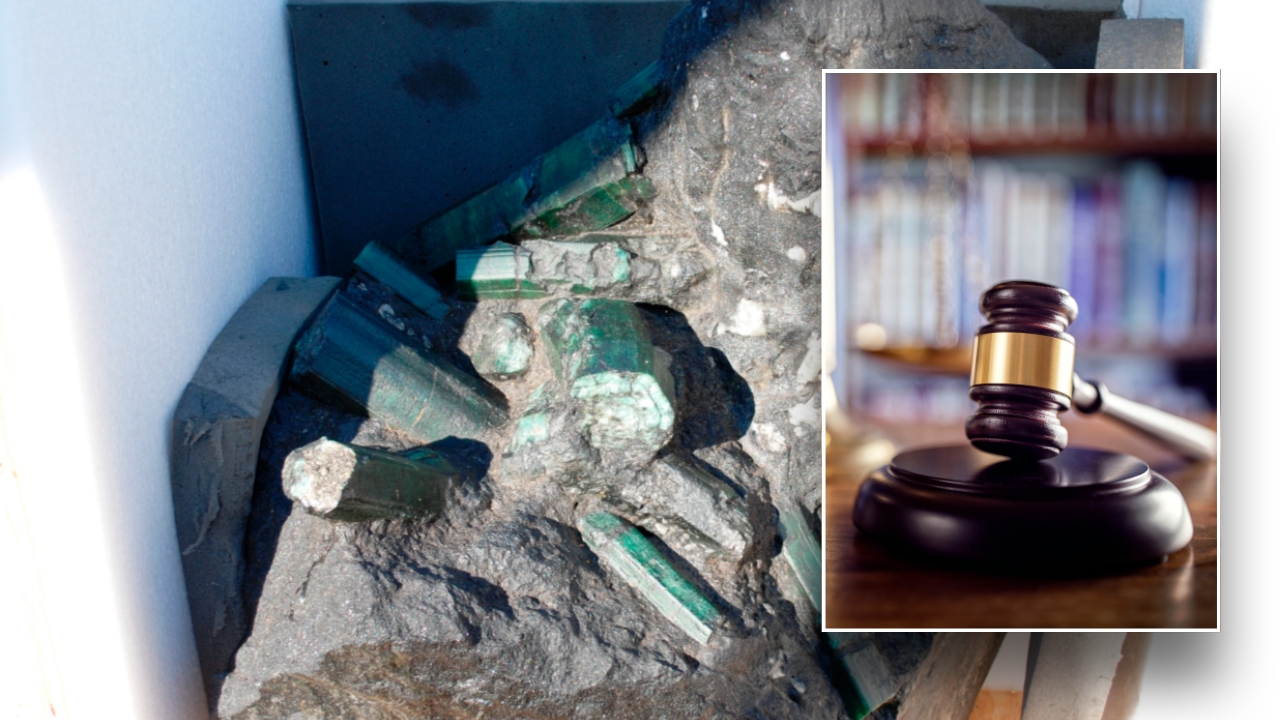Several tornadoes and heavy rain hit south-central Florida on Wednesday afternoon as residents rushed to make last-minute preparations for Hurricane Milton. The storm is currently a Category 4 hurricane but is “growing in size” as it approaches the state’s west coast, according to the National Hurricane Center.
The NHC said Monday that Milton had intensified into a Category 5 storm, but by Wednesday morning it had dropped down to a Category 4, with sustained winds of up to 155 mph. The NHC said the storm will remain a hurricane as it crosses the Florida peninsula.
A storm surge warning is in effect for the central to southern west coast of Florida, including Tampa. The NHC warning indicates “a danger of life-threatening inundation, from rising water moving inland from the coastline, during the next 36 hours in the indicated locations.”
As of 2 p.m. Wednesday, the storm was about 150 miles southwest of the Tampa metropolitan area and moving northeast at about 16 mph, with sustained winds of 130 mph. The hurricane will likely make landfall late Wednesday night or early Thursday morning, according to the NHC.
Milton rapidly intensified as it crossed the Gulf of Mexico due to the heat of the gulf’s surface waters. When a storm forms into a hurricane it absorbs energy from the heat in surface waters and, with 2024 on track to have the warmest average global air temperature on record, Milton’s ability to grow stronger in such a short amount of time was “a near-certainty,” according to physical oceanographer Gregory Foltz at the U.S. National Oceanic and Atmospheric Administration.
Millions of people in 15 counties are under mandatory evacuation orders. The Federal Emergency Management Agency wrote Wednesday: “Your life is at serious risk if you don’t take action immediately — every second counts.”
Florida Gov. Ron DeSantis said people near the coast still have time to evacuate inland and recommended they head to one of the 149 general population shelters open throughout the state.
“The current total shelter population is just 31,000 individuals. We have room in those shelters for a total population of almost 200,000 individuals. So there is space available in these shelters,” DeSantis said in a storm briefing Wednesday morning. He said he expects more people to head toward shelters Wednesday afternoon and night.
DeSantis also said the Florida Highway Patrol has facilitated 106 long-distance fuel tanker escorts to transport close to one million gallons of gasoline into Tampa and other areas.
Gas stations around the state have already run out of fuel as people attempt to either leave the state or have fuel on stock for at-home generators. Around 23% of the state’s 7,900 gas stations are currently without fuel, up from around 17% on Tuesday, according to data from GasBuddy.
FEMA Administrator Deanne Criswell recommended Wednesday that Floridians in areas under storm surge watch should still try to evacuate, even if only a few miles inland. “Milton is going to be a deadly and catastrophic storm,” Criswell said in a press briefing.
Criswell also said she will travel to Florida on Wednesday to help with recovery efforts once the storm hits. “I want people to hear from me directly, FEMA is ready,” she said.
The National Weather Service issued a tornado warning Wednesday for most of central and southern Florida, including Miami-Dade County. The warning also includes hail up to a half inch in size and isolated gusts of up to 70 mph.
At 11 a.m., the NHC reported tornadic supercells across southern Florida. The NWS reported a tornado along I-75 near Miami as outer bands of the hurricane moved through the area.
Another tornado was recorded near the Everglades, wetlands on the southern tip of the Florida peninsula.
The rushed preparations for Milton come as Floridians are still recovering from Hurricane Helene, which made landfall Sept. 26. More than 225 people died from the storm and recovery efforts lagged as the storm isolated communities. Helene also highlighted the unpredictability of hurricanes, as the storm transitioned into a tropical storm and still ravaged the inland city of Asheville, North Carolina.
The Justice Department warned Floridians and other consumers Wednesday to watch out for any potential fraud or price-gouging schemes during and following the hurricane. Price gouging is the practice of retailers artificially inflating prices when the retailer’s costs have not increased. Consumers are particularly vulnerable to price gouging during natural disasters, such as hurricanes.
The department said people are not required to pay a fee to get disaster relief, and that only scammers will repeatedly push for somebody to pay for services by wire transfer, gift card, payment apps, cryptocurrency or cash.
“Companies are on notice: do not use the hurricane as an excuse to exploit people through illegal behavior,” said Manish Kumar, deputy assistant attorney general of the Justice Department’s Antitrust Division. “The Antitrust Division and its law enforcement partners will act quickly to root out anticompetitive behavior and use every tool available to hold wrongdoers accountable.”
President Joe Biden backed up this sentiment in a hurricane briefing Wednesday, saying, “I’m calling on the airlines and other companies to provide as much service as possible to accommodate evacuations and not to engage in price gouging, to just do it on the level.”
The Department of Transportation told CNBC it is already in talks with airlines around affordability of flights in areas affected by the storm.
Biden said Milton could be the worst storm to hit Florida in over a century and that his administration has already deployed thousands of federal personnel across the Southeast to aid in recovery.
Read the full article here


















